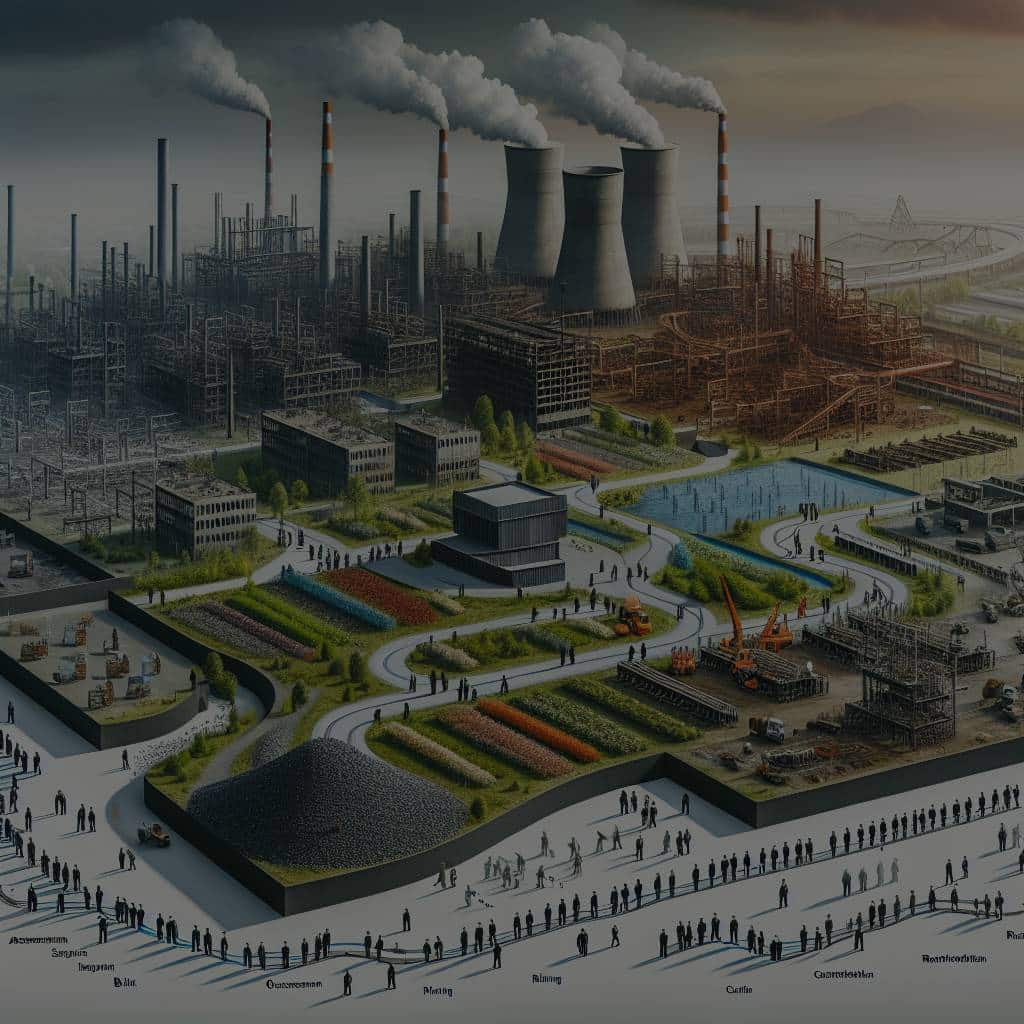How Can Real Estate Developers Optimize the Use of Brownfield Sites?

As real estate developers, you’re constantly looking for the next best space to transform. You are at the forefront of urban growth, economic development, and the creation of sustainable spaces. In this modern era, one of the most significant opportunities lies in brownfield sites. These previously developed lands may have been contaminated by hazardous substances, pollutants, or contaminants, but they also hold immense potential for redevelopment. This article will dive deep into the strategies and considerations to optimize the use of these underutilized spaces.
Understanding the Potential of Brownfields
Before we delve into the strategies for redevelopment, it’s crucial to understand the potential that brownfields hold. These sites often exist in urban areas that have been previously industrialized, making them prime spots for new developments. Their location often means easy access to infrastructure, transport, and potential customers or residents.
In the same genre : What Are the Latest Trends in Real Estate Financing Through Peer-to-Peer Lending?
However, the development of brownfields comes with its fair share of challenges. This includes potential contamination, regulatory hurdles, and community resistance. But with proper planning, risk management, and stakeholder engagement, these challenges can be effectively mitigated.
Strategies for Brownfield Redevelopment
Brownfield redevelopment is not a one-size-fits-all approach. Each site is unique, with its own set of challenges and opportunities. Here are some strategies to consider when planning your project.
Topic to read : What Are the Best Freehold Management Practices for Real Estate Investors?
Sustainable Remediation
As the name suggests, sustainable remediation is all about finding environmentally friendly solutions to clean up contamination at the site. This could include phyto-remediation, where plants are used to absorb or break down pollutants, or bio-remediation, where microorganisms are used to clean the soil.
Urban Regeneration
Urban regeneration is a broader strategy that goes beyond the site itself. It aims to revitalize the entire surrounding community, improving not just the physical spaces but also the socio-economic conditions. This could involve creating new job opportunities, enhancing public amenities, or strengthening community resilience.
Green Building Design
Green building design is a critical aspect of sustainable development. It’s all about creating buildings that are energy-efficient, water-efficient, and use materials that are sustainable and non-toxic. Implementing green building designs not only reduces the environmental impact but also enhances the building’s value and appeal to potential tenants or buyers.
Inclusive Planning
Inclusive planning is about ensuring that the redevelopment project benefits everyone in the community, not just a few. This involves engaging with the community right from the start, understanding their needs and concerns, and incorporating their inputs into the project design.
Navigating the Planning and Regulations
Redeveloping a brownfield site requires navigating a complex landscape of planning and regulations. This involves not just complying with environmental regulations but also zoning laws, building codes, and other local ordinances. It’s crucial to work closely with regulatory agencies, engage legal expertise as needed, and adopt a proactive approach to compliance.
Leveraging Economic and Financial Incentives
Finally, optimizing the use of brownfield sites is not just about managing the risks and challenges; it’s also about leveraging the opportunities. Many governments and agencies offer a range of economic and financial incentives for brownfield redevelopment, such as tax credits, grants, and low-interest loans. These incentives can significantly offset the costs of remediation and development and make your project financially viable.
In conclusion, while brownfield redevelopment comes with its fair share of challenges, it also holds significant opportunities for real estate developers like you. With careful planning, sustainable practices, and proactive stakeholder engagement, you can transform these underutilized sites into thriving, sustainable spaces that drive urban growth and economic development.
Adopting Sustainable Practices For Long Term Investment
A key takeaway for real estate developers from the concept of brownfield redevelopment is the importance of adopting sustainable practices. This approach is not merely about addressing the immediate environmental concerns of the site, but rather, it is geared towards long-term investment and sustainable growth in the real estate sector.
Incorporating sustainable practices in brownfield redevelopment goes beyond environmental remediation. It involves integrating sustainable design principles into every aspect of the redevelopment project, from the planning and construction stages right through to the operational phase. This includes energy-efficient design, use of eco-friendly materials, waste management solutions, and water conservation strategies, among others.
The implementation of sustainable strategies can significantly improve the environmental impact of a redevelopment project. Moreover, it can lead to cost savings in the long run, boost the property’s market value, and enhance its appeal to potential tenants or investors who prioritize sustainability.
It’s also important to note that sustainable redevelopment of brownfield sites can contribute to broader sustainable urban development goals. By transforming contaminated and underutilized sites into useful spaces, developers can promote urban regeneration, enhance public health and safety, and contribute to economic growth and job creation.
Enhancing Community Engagement in Decision Making
One of the key aspects of successful brownfield redevelopment is effective community engagement. This involves not just informing the community about the project, but actively involving them in decision making. This approach ensures that the redevelopment project aligns with the community’s needs and aspirations and fosters a sense of ownership and support for the project.
Community engagement can be achieved through various means, including public meetings, surveys, workshops, and online platforms. It’s important to provide clear and transparent information about the project, including the potential risks and benefits, and to listen and respond to community feedback.
Involving the community in decision making can lead to better outcomes for the redevelopment project. It can help address potential issues early on, build trust and goodwill, and enhance the long-term success and sustainability of the project. Furthermore, it can foster social cohesion and empowerment, ultimately contributing to the broader goals of sustainable development.
Key Takeaways for Real Estate Developers in Brownfield Redevelopment
In conclusion, brownfield sites provide a unique opportunity for real estate developers to drive sustainable growth and urban regeneration. However, the path to successful brownfield redevelopment requires careful planning, sustainable practices, compliance with regulations, and active community engagement.
It’s important to see brownfield redevelopment not merely as a challenge but as a long-term investment that can yield significant economic, social, and environmental benefits. It’s a chance to transform an industrial brownfield into a thriving, sustainable space that contributes to urban growth and public health improvement.
To optimize the use of brownfield sites, real estate developers need to adopt sustainable solutions, engage the community in decision making, leverage financial incentives, and work closely with regulatory bodies. A proactive and strategic approach to brownfield redevelopment can lead to successful projects that are not just profitable but also contribute to sustainable urban development.
